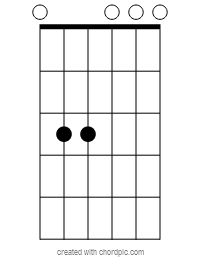i dont know if a single chord at that point in time, absolute, can really envoke a perfect relative sound that has to do with a distance in time. phrygian isn’t an absolute, it is a way to describe a phrase. i mean we don’t label chords with mode names.
so in a sense i kinda agree with tommo, you have to draw your ear to it with a chord progression or cadence for a chord to draw you into phrygian. probably keeping that phrygian sound on the I or V chord of the progression/cadence will help to find a better chord to drone on for phrygian practice.
i like this one

or like you say the flamenco one

dont even know the theory behind this one but it just sounds nice

you could also think about utilizing phrygian pentatonic type scale and what would sound good with that also. but i dont go into this realm that much.
i dont know if that flamenco chord is exactly from phrygian dominant i think it comes more from the hungarian minor mode which has a double harmonic on the dominant. it sounds more like its coming from that e double harmonic the dominant of hungarian minor mode realm to my ear. but like i said you really cannot put a chord to a modal sound, as that i feel comes from the phrases which is a distance in time.
dominant - Scale 2483: "Double Harmonic"
tonic - Scale 2509: "Double Harmonic Minor"
this scale is pretty slick pentatonic type thing for that flamenco chord
red tonic - Scale 403: "Raga Reva"
blue dominant - Scale 611: "Anchihoye"
i am still trying to grasp the guidonian hand hexachord solfeggio stuff, but if you guys just know some basics on tetrachords you can create so many different scales. and can aid in comprehending how a scale is built, and where it originates.
whats cool about that scale is if you know the phrygian pentatonic, not the one from the minor pentatonic, which would be blues minor, you can just sharp the 3rd note of that scale to get this one here. and sharpen it one more time to get this one which sounds pretty cool as well.
whats funny is the big three tetrachords major, minor, and phrygian are in the italian solfeggio so when they sing downward of the compound scale you sing la so fa mi which is one of the most important phrygian cadence progressions, how i think about it, its just a descending phrygian tetrachord. if you want to know more about this look into the gamut, i think they call it running the gamut. the difference here though is they were using hexachords 6 note scales overlapping. sung differently ascending and descending, wiki gamut.
i have actually heard flamenco players call that chord phrygian major so take it or leave it, it works. 
i get what you are saying though about just plain phrygian maybe its best to not even consider it phrygian until you start to really uncover the sound of it in more exotic scales. maybe its best to think of it as upper minor in major/minor scenarios which i have read it to be called on theory sites. since an aeolian, natural minor scale is the tetrachord structure, minor and upper minor (aka phrygian).
and honestly i would take the names with a grain of salt as the greeks called what we call phrygian as dorian so let that sink in for a bit. the greeks had the names the exact way in my opinion if you study tetrachord structure of each of the modes you will find out why it makes more sense, yet we now have them all jumbled up maybe in a sort of better order except mixolydian doesnt quite make sense once you look at tetrachord makeup since locrian was originally greek mixolydian with greek lydian as major and hypolydian as lydian. which would put hypodorian as our current aeolian since greek dorian is our phrygian, and that puts our mixolydian as the greeks hypophrygian. gets really crazy, and i need to do more research on this as there are only few books that goes this deep. one is quite detailed, and worth a peek.
and maybe a better way to look at it is first came monophonic then polyphony so maybe consider that the names of these modes are more about single note melodies from a certain zone on the earth that was part of their culture.











